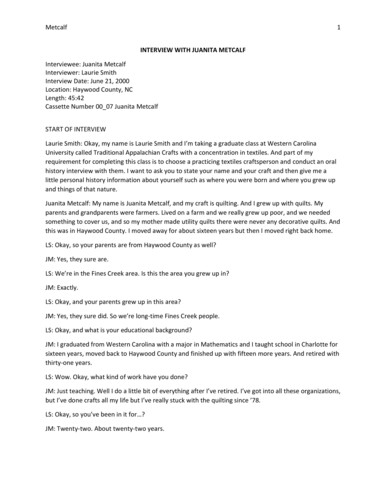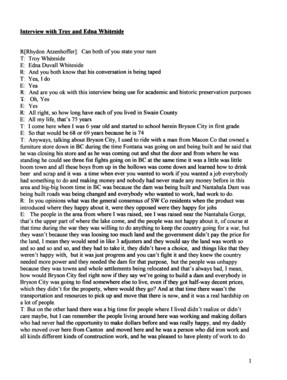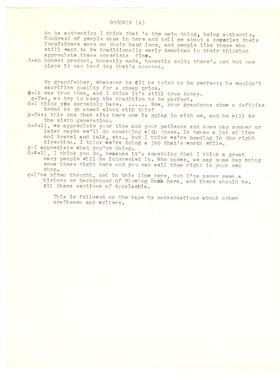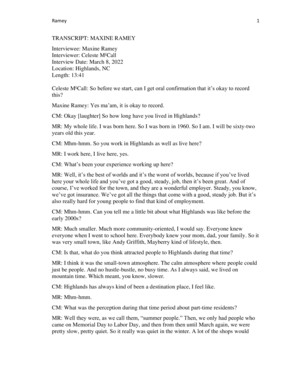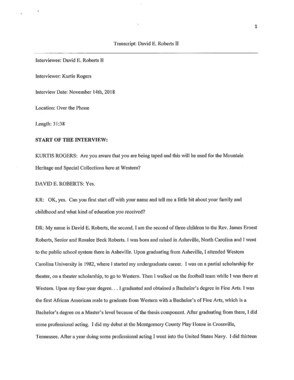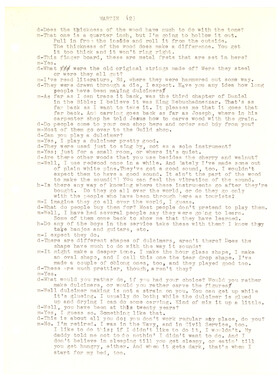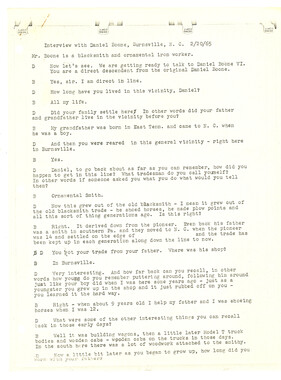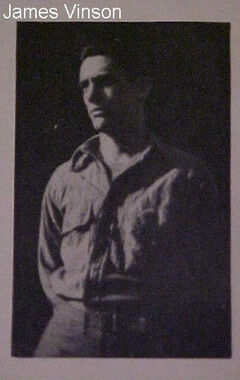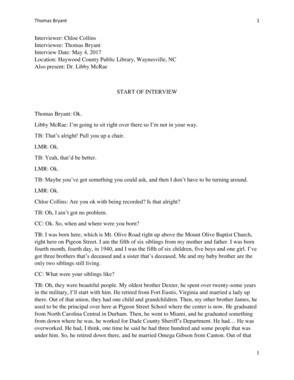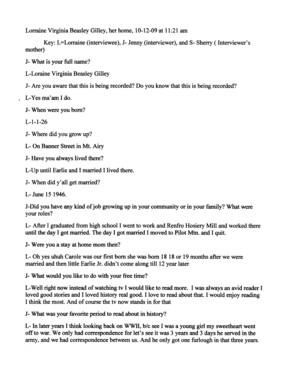Western Carolina University (20)
View all
- Canton Champion Fibre Company (2308)
- Cherokee Traditions (293)
- Civil War in Southern Appalachia (165)
- Craft Revival (1942)
- Great Smoky Mountains - A Park for America (2767)
- Highlights from Western Carolina University (430)
- Horace Kephart (941)
- Journeys Through Jackson (154)
- LGBTQIA+ Archive of Jackson County (19)
- Oral Histories of Western North Carolina (314)
- Picturing Appalachia (6679)
- Stories of Mountain Folk (413)
- Travel Western North Carolina (160)
- Western Carolina University Fine Art Museum Vitreograph Collection (129)
- Western Carolina University Herbarium (92)
- Western Carolina University: Making Memories (708)
- Western Carolina University Publications (2283)
- Western Carolina University Restricted Electronic Theses and Dissertations (146)
- Western North Carolina Regional Maps (71)
- World War II in Southern Appalachia (131)
University of North Carolina Asheville (6)
View all
- 1700s (1)
- 1860s (1)
- 1890s (1)
- 1900s (2)
- 1920s (2)
- 1930s (5)
- 1940s (12)
- 1950s (19)
- 1960s (35)
- 1970s (31)
- 1980s (16)
- 1990s (10)
- 2000s (20)
- 2010s (24)
- 2020s (4)
- 1600s (0)
- 1800s (0)
- 1810s (0)
- 1820s (0)
- 1830s (0)
- 1840s (0)
- 1850s (0)
- 1870s (0)
- 1880s (0)
- 1910s (0)
- Appalachian Region, Southern (15)
- Asheville (N.C.) (11)
- Avery County (N.C.) (1)
- Buncombe County (N.C.) (55)
- Cherokee County (N.C.) (17)
- Clay County (N.C.) (2)
- Graham County (N.C.) (15)
- Great Smoky Mountains National Park (N.C. and Tenn.) (1)
- Haywood County (N.C.) (40)
- Henderson County (N.C.) (5)
- Jackson County (N.C.) (131)
- Knox County (Tenn.) (1)
- Macon County (N.C.) (17)
- Madison County (N.C.) (4)
- McDowell County (N.C.) (1)
- Mitchell County (N.C.) (5)
- Polk County (N.C.) (3)
- Qualla Boundary (6)
- Rutherford County (N.C.) (1)
- Swain County (N.C.) (30)
- Watauga County (N.C.) (2)
- Waynesville (N.C.) (1)
- Yancey County (N.C.) (3)
- Blount County (Tenn.) (0)
- Knoxville (Tenn.) (0)
- Lake Santeetlah (N.C.) (0)
- Transylvania County (N.C.) (0)
- Interviews (314)
- Manuscripts (documents) (3)
- Personal Narratives (7)
- Photographs (4)
- Sound Recordings (308)
- Transcripts (216)
- Aerial Photographs (0)
- Aerial Views (0)
- Albums (books) (0)
- Articles (0)
- Artifacts (object Genre) (0)
- Biography (general Genre) (0)
- Cards (information Artifacts) (0)
- Clippings (information Artifacts) (0)
- Crafts (art Genres) (0)
- Depictions (visual Works) (0)
- Design Drawings (0)
- Drawings (visual Works) (0)
- Envelopes (0)
- Facsimiles (reproductions) (0)
- Fiction (general Genre) (0)
- Financial Records (0)
- Fliers (printed Matter) (0)
- Glass Plate Negatives (0)
- Guidebooks (0)
- Internegatives (0)
- Land Surveys (0)
- Letters (correspondence) (0)
- Maps (documents) (0)
- Memorandums (0)
- Minutes (administrative Records) (0)
- Negatives (photographs) (0)
- Newsletters (0)
- Newspapers (0)
- Occupation Currency (0)
- Paintings (visual Works) (0)
- Pen And Ink Drawings (0)
- Periodicals (0)
- Plans (maps) (0)
- Poetry (0)
- Portraits (0)
- Postcards (0)
- Programs (documents) (0)
- Publications (documents) (0)
- Questionnaires (0)
- Scrapbooks (0)
- Sheet Music (0)
- Slides (photographs) (0)
- Specimens (0)
- Speeches (documents) (0)
- Text Messages (0)
- Tintypes (photographs) (0)
- Video Recordings (physical Artifacts) (0)
- Vitreographs (0)
- WCU Mountain Heritage Center Oral Histories (25)
- WCU Oral History Collection - Mountain People, Mountain Lives (71)
- Western North Carolina Tomorrow Black Oral History Project (69)
- A.L. Ensley Collection (0)
- Appalachian Industrial School Records (0)
- Appalachian National Park Association Records (0)
- Axley-Meroney Collection (0)
- Bayard Wootten Photograph Collection (0)
- Bethel Rural Community Organization Collection (0)
- Blumer Collection (0)
- C.W. Slagle Collection (0)
- Canton Area Historical Museum (0)
- Carlos C. Campbell Collection (0)
- Cataloochee History Project (0)
- Cherokee Studies Collection (0)
- Daisy Dame Photograph Album (0)
- Daniel Boone VI Collection (0)
- Doris Ulmann Photograph Collection (0)
- Elizabeth H. Lasley Collection (0)
- Elizabeth Woolworth Szold Fleharty Collection (0)
- Frank Fry Collection (0)
- George Masa Collection (0)
- Gideon Laney Collection (0)
- Hazel Scarborough Collection (0)
- Hiram C. Wilburn Papers (0)
- Historic Photographs Collection (0)
- Horace Kephart Collection (0)
- Humbard Collection (0)
- Hunter and Weaver Families Collection (0)
- I. D. Blumenthal Collection (0)
- Isadora Williams Collection (0)
- Jesse Bryson Stalcup Collection (0)
- Jim Thompson Collection (0)
- John B. Battle Collection (0)
- John C. Campbell Folk School Records (0)
- John Parris Collection (0)
- Judaculla Rock project (0)
- Kelly Bennett Collection (0)
- Love Family Papers (0)
- Major Wiley Parris Civil War Letters (0)
- Map Collection (0)
- McFee-Misemer Civil War Letters (0)
- Mountain Heritage Center Collection (0)
- Norburn - Robertson - Thomson Families Collection (0)
- Pauline Hood Collection (0)
- Pre-Guild Collection (0)
- Qualla Arts and Crafts Mutual Collection (0)
- R.A. Romanes Collection (0)
- Rosser H. Taylor Collection (0)
- Samuel Robert Owens Collection (0)
- Sara Madison Collection (0)
- Sherrill Studio Photo Collection (0)
- Smoky Mountains Hiking Club Collection (0)
- Stories of Mountain Folk - Radio Programs (0)
- The Reporter, Western Carolina University (0)
- Venoy and Elizabeth Reed Collection (0)
- WCU Gender and Sexuality Oral History Project (0)
- WCU Students Newspapers Collection (0)
- William Williams Stringfield Collection (0)
- Zebulon Weaver Collection (0)
- African Americans (97)
- Artisans (5)
- Cherokee pottery (1)
- Cherokee women (1)
- College student newspapers and periodicals (4)
- Education (3)
- Floods (13)
- Folk music (3)
- Great Smoky Mountains National Park (N.C. and Tenn.) (1)
- Hunting (1)
- Mines and mineral resources (2)
- Rural electrification -- North Carolina, Western (2)
- School integration -- Southern States (2)
- Segregation -- North Carolina, Western (5)
- Slavery (5)
- Sports (2)
- Storytelling (3)
- World War, 1939-1945 (3)
- Appalachian Trail (0)
- Cherokee art (0)
- Cherokee artists -- North Carolina (0)
- Cherokee language (0)
- Church buildings (0)
- Civilian Conservation Corps (U.S.) (0)
- Dams (0)
- Dance (0)
- Forced removal, 1813-1903 (0)
- Forest conservation (0)
- Forests and forestry (0)
- Gender nonconformity (0)
- Landscape photography (0)
- Logging (0)
- Maps (0)
- North Carolina -- Maps (0)
- Paper industry (0)
- Postcards (0)
- Pottery (0)
- Railroad trains (0)
- Waterfalls -- Great Smoky Mountains (N.C. and Tenn.) (0)
- Weaving -- Appalachian Region, Southern (0)
- Wood-carving -- Appalachian Region, Southern (0)
- Sound (308)
- StillImage (4)
- Text (219)
- MovingImage (0)
Interview with Juanita Metcalf
Item
Item’s are ‘child’ level descriptions to ‘parent’ objects, (e.g. one page of a whole book).
-
-
Metcalf 1 INTERVIEW WITH JUANITA METCALF Interviewee: Juanita Metcalf Interviewer: Laurie Smith Interview Date: June 21, 2000 Location: Haywood County, NC Length: 45:42 Cassette Number 00_07 Juanita Metcalf START OF INTERVIEW Laurie Smith: Okay, my name is Laurie Smith and I’m taking a graduate class at Western Carolina University called Traditional Appalachian Crafts with a concentration in textiles. And part of my requirement for completing this class is to choose a practicing textiles craftsperson and conduct an oral history interview with them. I want to ask you to state your name and your craft and then give me a little personal history information about yourself such as where you were born and where you grew up and things of that nature. Juanita Metcalf: My name is Juanita Metcalf, and my craft is quilting. And I grew up with quilts. My parents and grandparents were farmers. Lived on a farm and we really grew up poor, and we needed something to cover us, and so my mother made utility quilts there were never any decorative quilts. And this was in Haywood County. I moved away for about sixteen years but then I moved right back home. LS: Okay, so your parents are from Haywood County as well? JM: Yes, they sure are. LS: We’re in the Fines Creek area. Is this the area you grew up in? JM: Exactly. LS: Okay, and your parents grew up in this area? JM: Yes, they sure did. So we’re long-time Fines Creek people. LS: Okay, and what is your educational background? JM: I graduated from Western Carolina with a major in Mathematics and I taught school in Charlotte for sixteen years, moved back to Haywood County and finished up with fifteen more years. And retired with thirty-one years. LS: Wow. Okay, what kind of work have you done? JM: Just teaching. Well I do a little bit of everything after I’ve retired. I’ve got into all these organizations, but I’ve done crafts all my life but I’ve really stuck with the quilting since ’78. LS: Okay, so you’ve been in it for…? JM: Twenty-two. About twenty-two years. Metcalf 2 LS: And can you tell me once again how you became interested in quilting? You said it was a family tradition. JM: Yes. And then I went to a show and saw all of these beautiful quilts and I decided that’s what I wanna do. I had done quilting, I mean knitting. I’d made sweaters, and crocheting I’d done everything but then when I hit quilting I stuck with it. LS: Uh-huh. That’s the one you found most rewarding for you. JM: Yes. LS: Okay. And you did mention that it is a family tradition. JM: Right. Uh-huh. LS: Who exactly taught you? JM: I taught myself. LS: Oh wow! JM: I didn’t take any lessons, I just got magazines and books and just sat down and did it on my own. I’ve never had a class in quilting whatsoever. I picked it up on my own. LS: That’s very interesting. What is your main motivation behind quilting? JM: Just to… mmm have beautiful, to me it’s a beautiful piece of work. LS: Mhm. JM: And that’s why I keep going. I’ll find something and think, “Well am I gonna be able to do that?” Well I didn’t really think I’d be able to hand quilt because I had polio at the age of four, and you need to use the middle finger on your left hand underneath to push up the fabric to do the hand quilting. And I couldn’t do that because it had no leverage in it, so I had to devise me a way to do the hand quilting and I ended up using the thumb and the knuckle on the first finger. Those were the two- one would get sore I’d go to the other one. Because you do really prick ‘em and get ‘em sore. So I devised my own method. LS: That’s great. JM: I’ve always been that way no matter what I wanted to do I have found some way, even though with the polio, that I could do it. LS: If you set your mind to it you can accomplish it. JM: Yes. Right. You sure can. LS: Okay, is your main interest in the traditional aspect that you talked about or is it also a main source of income for you? JM: No, it is not a main source of income because, if it was I’d starve to death [Laughter] LS: [Laughter] Uh-huh. Metcalf 3 JM: But, no, it’s just something I love and right now. I’m producing the Arts and Crafts Show at the Balsam Mountain Inn and it includes all the different types of crafts from western North Carolina and we are limited in that, so it is a heritage of this area. All of their weaving, painting, all different types of crafts along with the quilting. LS: Okay, do you hand quilt, machine quilt, a combination of those? JM: I do a combination, but it’s more machine quilting now because, what was it four or five years ago, I fell and broke my left arm three different times, so it is just about had it as far as doing any hand quilting. I can still do some but not enough to get anything done, so I have gone to the machine quilting. LS: Okay. Do you quilt traditional designs or do you design your own quilts? JM: I’ve done both. I do both. I’ll sit down and design one and then sometimes I’ll see one in a book that I love and I will do it. So I do some of both. LS: Mhm. Are there any favorite designs that…? JM: No. I like ‘em all. Just when I see a pretty picture of one then I’ll do it. LS: For your quilting purposes what type of materials do you prefer to work with? JM: I prefer the one hundred percent cotton. But sometimes, to get the color combinations you need, you’ll have to pick up some that’s got the polyester blend. But, if I had my choice it would be a hundred percent cotton. LS: How do you decide what designs you will quilt? JM: Whatever I think looks good with the pattern. LS: Okay. And do you, do you… you were talking about color and materials, so you do take colors, the colors into consideration as far as coming up with a… JM: Right. Design. LS: A design or a color scheme or something. JM: Uh-huh. Yeah. LS: Okay can you show me or explain to me the process that you go through in creating the quilt? JM: Okay from designing or? LS: Anything that you would like to share with me. JM: Okay. If it’s one out of the book, then most of the time I will just look at the picture in the book and decide what size I want the block. And then once I decide on the size of the block I wanna quilt, work with, then I take my graph paper and draw out my design on it and kindly color code so that I will know which colors to put where when I start piecing. LS: Mhm. Metcalf 4 JM: And then, once I’ve got it on graph paper, then I use the clear plastic, well it’s not really clear it’s kind of a milky shade of plastic and trace the design onto that and add my seaming lines. LS: Is it a special kind of plastic? JM: Yes. Uh-huh. Yes, it’s used for quilting. LS: Okay. JM: Uh-huh. And I use that as my pattern. And before I do anything else, I will take the colors I have chosen, cut out enough for one block, and then I will piece that one block to see if it’s what I want. And if it is then I go ahead and cut for the rest of the block and piece it together. And, since I do machine quilting, the majority of the times I do not piece the whole quilt and put it on the back. I will piece half of the quilt and leave the borders off, don’t put the borders on. And I will machine quilt that and I will machine quilt the other half then put those together and then add the borders to the quilt. LS: Okay. JM: So, and then put your binding on it ‘n you have it finished. LS: So it really takes… JM: Looong time. LS: Artistic talent. JM: It does. LS: To bring it all together. JM: And it takes mathematics, which is… LS: Your area. JM: What I’ve taught all my life. Right. [Laughter] LS: [Laughter] Right. Okay, so you’ve come up with a quilt top as it’s referred to right? JM: Right. Then… LS: And what is…? JM: Then you use polyester batting or fleece. This is fleece that I use in placemats. It’s a thinner weight than what you have in quilts. And then you put your top with your fleece in between and then a solid piece on the back. Now you can use printed fabric on the back of the quilt or you can use a muslin or whatever. But always wash your fabrics first to make sure they’re not gonna bleed, most of the time the fabrics that you get today are not gonna fade or bleed. But, I always wash ‘em to take care of shrinkage because cotton is gonna shrink and some of it is gonna shrink more than others, so that’s why you need to wash all the fabrics first. LS: This is beautiful. So is this a placemat? Metcalf 5 JM: Yes. And that’s one of my original designs. I loved a Dresden Plate, but you couldn’t use a round placemat and so I just took it and stretched my pattern out and got an elongated Dresden Plate. LS: So is this ready to quilt or? JM: No, that’s ready to sew the three layers together and then turn it and then it will be ready to quilt. You sew around the outside edges and then I turn it through the center hole. Well I clip the edges off of it first all that off and then I turn it through the inside and it comes out looking like this. LS: Wow. Ooh. JM: And then I go to the machine and do my quilting and then add the center. LS: How do you come up with these designs? I mean how is that…? JM: Now that’s called meandering quilting and it just takes practice to do that because a lot of people will try to do it. You use the clear monofilament thread on top and then to match your background, but you’ve always got your clear on the top and you cannot use the clear on the bottom it will mess your machine up if you do. LS: Well how do you get the, do you have to draw this on here or do you just… JM: No. Do it all hand. LS: Wow. JM: Just do it all hand. LS: Wow. [Laughter] I’d hate to see something that I had done. JM: [Laughter] LS: And I sew! [Laughter] JM: Well see, with me now, I couldn’t do it that well at first. LS: Uh-huh. JM: It took a lot of practice to get to do that even though I have sewn all my life. LS: That is beautiful. Okay, do you, when we spoke on the phone and then you’ve mentioned it here today you talked about that you were doing a quilt show at the Balsam Mountain Inn. JM: Mhm. LS: Are there any other places that you show your quilts or? JM: Well I, not now. I used to have a show every year in Maggie Valley, a quilt show where people brought their quilts in and we displayed ‘em and some of ‘em had ‘em for sale, and this was always over the fourth of July and we had the big show there, but I don’t have it anymore because this… producing this show is all I have time for. LS: And how long… Metcalf 6 JM: And it’s a year-round show. LS: Okay. JM: It’s a year-round show now so it goes twelve months a year. LS: So your quilts will be on display…? JM: Year-round. And I have to keep making new ones just in case I sell one, but the wall hangings I do sell quite a few of those. LS: Uh-huh. Okay, if you did want to do these other quilt shows, you know or if… JM: Uh-huh. LS: If you know of people who do it, how do they find out about ‘em? How do they know where…? JM: There is an organization in North Carolina called the North Carolina Quilt Symposium Incorporated. And their main office is in Raleigh. And this is one of the better ways to find out all the shows in North Carolina. And they put on a big show every year. I have taught and given demonstrations at their big symposium each year. LS: Uh-huh JM: And another way is in your magazine- quilt magazines. It has a calendar of events and each of those that will tell you where all the quilt shows are and some of ‘em give prize money others don’t. LS: Well if you find out about a show can you, if you just want to go participate can you or is there an application? JM: You have to fill out an application and then sometimes there’s a fee to enter, sometimes it’s a juried show and you have to send your stuff to make sure that it meets the qualifications to the show before you can enter it. So, there’s different steps for different shows. LS: Okay. You mentioned something about publications I think. JM: Uh-huh. LS: What are some of the professional or trade publications that are available to quilters? JM: Well there’s the Traditional Quilter, there’s Quilter’s Newsletter, there’s about six different quilt magazines that have just all kinds of quilting each month. And these, some of ‘em have the patterns in ‘em some of ‘em just have a picture. But of course with me with my math and geometry background I can figure out the pattern on my own, so I don’t, I don’t use the patterns in the book the majority of the times. LS: Maybe use them for somebody that’s not… JM: Right. Because I don’t trust ‘em. I have found the measurements are wrong. Well a lot of times when you copy anything, it’s going to distort the pattern. So that’s why I always go back and do mine on graph paper no matter if the pattern is there. And then go from there to the plastic. And I’m sure my pattern is correct then. Metcalf 7 LS: Okay. JM: And you use a quarter of an inch seam allowance in quilting, whereas in clothing you use five-eighths. LS: Right. JM: Is it still five-eighths? LS: Yep. JM: Okay. [Laughter] LS: Five-eighths and three-eighths. [Laughter] JM: ‘Cause I quit making clothes altogether. LS: Right. JM: But, there’s a lot of different ones and of course I’ve published a book on quilting. It’s a little pamphlet, like when I first started quilting. And of course my things have been published in, by Laureate Publishing in three different ones of their books have got my stuff in it. LS: Oh. Do you have some of those with you that we could look at? JM: Let me see if I can find one right off. LS: Okay. LS: Oh my goodness. JM: Now this one has got quite a few… Now is it this one or is it? No, this one. This one’s the one that’s loaded with my stuff. Now here is my, where is it my mailbox. I don’t know where, I thought I had the right book there. Well, let me look in this pile. LS: Is there something that I can be looking for or? JM: It’s, you’ll find a mailbox. And I thought that was, I know that’s the one that’s got it in it maybe. It’s not this one. Maybe it was a little bit farther than I thought. LS: So when you, when your things are published do you, I mean how do you go about having them published and included in these books? JM: Well, the writers over there, Dawn Cusick, contacted me about… LS: Over there? JM: Uh-huh. LS: Where is over there? JM: In Asheville. LS: Oh okay. Metcalf 8 JM: The Laureate Publishing is out of Asheville. LS: Oh okay. JM: And Dawn contacted me and each time they wanted something done differently, then depending on whether it’s Christmas she’d call and ask if I had a lot of Christmas things. And then she would contact me. Now here’s some of my stuff beginning to come up in this book. But I don’t see my Christmas book. But this little basket, this windsock, there’s a vest. LS: Those are beautiful. JM: And then of course there’s two potholders and an apron. Has the Apple design on them. LS: Wow. JM: Yeah, there’s my windsock it’s got your Dogwood design on it. Right there it is hung up. LS: Mm. Oh, you got a little card. JM: Mhm. LS: I’d like to have one of those before we leave. I love… JM: Go ahead and take it. LS: Great. JM: Go ahead and take it. And there was the basket. And then there’s some more I wonder if they’re over here I think. And this is still not the book that’s got all my… one of ‘em was just loaded with my stuff. Is this the one that’s got the jumper in it? LS: Do they… JM: Now there’s the little pillow and a little pillow quilt that unfolds into a little quilt and then when it’s together it looks like a pillow. LS: Oh. Do they, do they identify you in here? JM: Yes. LS: Do they use your…? JM: Yes, they do. They’ve got a list in the front, it’s in, okay right here’s my Dresden Plate, there’s the placemat. LS: Oh, so that this one right here. JM: Uh-huh. Mhm. And then there’s a wall, there’s the jumper! One of the jumpers with the quilted top. LS: Now do you sell things like this? JM: Yep. Yep. LS: Where do you market those types? I mean, is that at the Balsam Mountain Inn as well? Metcalf 9 JM: That usually, no, I don’t take any of those up there. Now there’s my wall hanging that peel out the Dresden Plate. I did those more when I had the quilt show in Maggie Valley. LS: Okay. JM: And then there’s that. But I still don’t see the one with the Christmas things in it. This is not it I’ve got one that’s Christmas, the other one’s just full. What I’ll do is find it and get it to you. LS: So that, you do have some of your things in each of these books right? JM: Not all of these. This one is the windsocks. Now I got some in this one, and then the other one. There was three of ‘em that she published that had my- now sometimes she would use a ghost writer name. That one’s one right there she used Chris Rankin instead of Dawn Cusick. So sometimes the writers do not use their given name. LS: Do you know the reason for that? JM: No I don’t. I do not know. LS: This, this is a lady that you’re talking about right, the Dawn? JM: Yes. Uh-huh. She lives over at Clyde. LS: I’m wondering if it has anything to do with male versus female. JM: I don’t know. And see on this one it is Cindy Burta. LS: And is that a ghost writer name too? JM: Mhm. Yeah. LS: Interesting. Now this one is So Many Gifts, So Little Time by Chris Rankin. JM: Mhm. LS: And the name of that book? JM: Is Wind Toys that Spin, Sting, Whirl, and Twirl. LS: By Cindy JM: Burta. LS: Burta. JM: Now see right there’s one of mine. That’s the Autumn Leaves. LS: How does that make you feel to open these books up and? JM: Oh I love it. [Laughter] LS: I just think, that would just JM: And then there’s the Christmas ones got the bear and the Christmas tree on it. Now I had the banners too but she couldn’t use the banners she just wanted the windsocks so those are the only two Metcalf 10 pieces that I have in this book and what I’ll do, maybe before I go to Balsam tomorrow, I will look and find that other book that’s got all my things in it and then I’ll write down the page numbers and you can come out, I’ll let you meet me there. LS: Oh great. JM: Right there where you turn up to your house. LS: Okay. JM: And just meet me there and get it. LS: That would be great. JM: So, and you could look through it. But it’s the one, now see all the front of this book is just about my things. See right there’s my, that’s an apron, there’s a potholder, and these little things were in there. Directions, but she didn’t put my directions in there. She used the pictures of mine on the front, but used different directions inside. And then that’s my Checkerboard, too, that I make. And make with checkers paint the checkers to match the checkerboard. LS: And all these things are quilted this is just… JM: Uh-huh. Mhm. LS: I didn’t realize you did so many different things. LS: And those, you made, did you make… JM: Uh-huh. LS: Those vests up there? JM: Mhm. LS: So you said that you normally, you usually do quilts now. JM: Wall hangings is the main thing. LS: Wall hangings. JM: Mhm. LS: Is that where the biggest demand is? JM: Yes. LS: Is that…? JM: Yes. Because it’s something that’s priced low enough to where people, to where they want something quilted. And those are the ones that are priced low enough to they can afford to buy one. Whereas your hand-quilted quilts, most of the time they go up over a thousand dollars anymore. LS: When you do sell those is there any particular segment of the population that you, that you’ve noticed? Metcalf 11 JM: No, it varies. And I had started making one, well I did make one for my son in the state colors ‘cause he graduated from NC State in black, red, and white. And this was one that I had designed, my own design. But, and he didn’t like it! So, he wants one it’s the Mariner’s Compass and I have not gotten around to making him one of those yet. But anyway, a lady bought this one I sold it for seventeen hundred dollars. ‘Cause it’s all hand-done. And she took a, I wanna say it was mink, but it was a real elaborate fur cover off of her bed to put this quilt on it. LS: Wow, that is a huge compliment. JM: So, it’s uh, it was a very, I know it was, it was very expensive what she had on it. LS: Now what size quilt would that, is that a king, queen? JM: That one was king size. Uh-huh. LS: From start to finish what kinda timeframe, like how many hours are we talking about? JM: If you do it by hand, you’re talking about a tremendous number of hours. And by machine, you can cut that in at least half if not more. LS: Mhm. JM: Maybe a fourth on some of ‘em depending. If it’s applique, they’ve got a new way to do the applique on a machine using the blind stitch on your machine, and it makes it much quicker to do our applique and then of course you use the freezer paper to turn the edges under and all of that just use a little of that water soluble glue, and then once you get it appliqued on then you wet it on the back make a little slit and pull the paper out once it’s done. So it’s so much easier. LS: Mhm. JM: But if it had to do this by hand, you would go all the way around that leaf turning it under basting it down, then you would go back and pin it onto that and then blind stitch all the way around it before it was finished. Whereas the other you just cut out your piece of paper, freezer paper, iron it to your fabric, cut out around the design leaving a seam allowance, and then run that water soluble fabric glue around the edge of that then just take your finger and press the edge over and it’s turned under for ya and it stays there until you get it appliqued and go to the machine and do the blind stitch. And then when you get all of it done you can stop any time and wet it on the back and take your pieces of paper out. LS: So things have improved. JM: Oh yes. LS: [Laughter] JM: Oh yes. LS: That is really interesting. So can you, can you estimate though how many hours you might take? JM: Well, that quilt right there has got over a thousand hours in it. LS: And this is the hand-quilted? Metcalf 12 JM: Yes, that’s hand-quilted, hand-appliqued, the whole works. Every bit of that was done by hand. LS: I love that scalloped border. JM: Uh-huh. LS: Beautiful. And so if you were to have machine-quilted that, you think that would be about half? JM: Oh it would cut it in half. Yes. LS: So about five hundred hours? JM: Mhm. Or less. Could be less than that. LS: What about something such as one of those vests? JM: One of those vests have got… LS: Do you mind if I look at ‘em? JM: No. LS: Okay. JM: Have got about maybe ten hours. It still takes a long time. LS: Well that’s a full day right there. JM: Yeah. Uh-huh. Mhm. LS: And you have to like, fold these individually? JM: Yeah. Uh-huh. LS: Each time you get ‘em the exact? JM: Yeah. LS: Width and then the placemats. What, how many hours? JM: I have made those now for what, oh I could make one of those in about four hours. Takes about four hours to do one of those. Cutting it… LS: Is that cutting out the pieces and… JM: Uh-huh. LS: Everything? JM: Yeah, because I cut out a whole stack at one time. LS: Mhm. JM: And you have to, the way that pattern is to get the ones to match and you have to lay those out before you start sewing ‘em together you can’t just pick up the pieces and go like you could the Dresden Metcalf 13 Plate. You can just keep picking up pieces. But on that every, there’s four different size pieces in that, and you really have to watch to get ‘em right. So, it takes about four hours to do one. LS: And what is this laying up here? Have you got something? JM: That’s a Log Cabin I’ve got started. And then that’s a table runner underneath there. But this is your Log Cabin. It’s real bright colors on this one. And what I do with these, when I would do the Log Cabin I would have problems with it coming out square and being the same size when I’d cut strips. So what I did was made my drawing on paper, and then run off a whole group of copies of that. And see all your copies, if you use copies you’ll get the same. And I will start in here with a center, put it on the wrong side of the fabric, wrong side of the paper. Leave the drawing on the underneath side and press your fabric on the other side. And I would put that over the center square on the paper, then I would start addin’ my strips and I would have lines all the way out through here to show where to sew each strip on as it went on. And then when you get through, you can see where I’ve torn the little pieces of paper off of the back. LS: Uh-huh. JM: Of the piece. And then once you get those done you can come and trim the outside edge you’ve got ‘em all the same size. Every one of ‘em match up just perfect. LS: So are you gonna make a quilt? JM: It’s gonna be a quilt. LS: Or a wall-hanging? JM: It’s gonna be a quilt. Mhm. I lack six more squares. LS: And how will they…? JM: It will go together, there’s several different ways that you can put the Log Cabin together, but you could start with your square diamond in the middle. And LS: Like that? JM: Uh-huh. And then when you come on out it looks like a single row. You’ll notice on the one up at Balsam when you take a picture of it, it comes out all diamond shape all the way on the quilt. And you could put… LS: So here’s the diamond, and then there will be. JM: Uh-huh. Another diamond in the blue on the outside of that. And then it continues. LS: These colors are really beautiful together, they’re so… JM: Yeah they’re really rich. LS: Mhm. JM: But I have done curtains- quilted curtains and everything. LS: Oh boy. Metcalf 14 JM: When I get that other book you’ll see them in it. LS: Okay. JM: ‘Cause I quilted the valance up there and it matched the placemats that were on the table and there’s a picture of all of that in that other book. LS: I can’t wait to see that. That’ll be… JM: Well it’s, that book was the first one and it’s really loaded. LS: Uh-huh. JM: With my stuff. LS: That’ll be exciting. Are you familiar with the HandMade in America organization? JM: Yes. LS: With Becky Anderson. JM: Right. Mhm. LS: Has that been helpful to you in any way? JM: Yes, and I have, when I had my shop open, well I think it’s still in it. It was listed in there, in their book they put out. Who was it? Ed somebody, I can’t even think of his name, put that book out. It was a listing of all the craft shops and everything in western North Carolina. LS: Now, you mentioned a shop. Where was your shop? JM: It was in the basement of my home. LS: Oh! Okay. JM: Yeah. Yeah, I had it down there. So.. LS: Did you have a showroom with your shop? LS: Okay, so the HandMade in America, you said that that has help… JM: I think it’s, I think it would help us here in this community. We had… when I was in as chairman of the Community Club, I had talked to Becky. She came out and talked to us about putting a shop, whatever, in the old school up there so that the local people could come in with their stuff and have an avenue to sell it and keep it open all the time, but that never did materialize, so. But yeah, Becky has a great thing going with this HandMade in America I think. LS: What are some of the.. you’ve mentioned you’re involved with some organizations. Are any of those related directly towards quilting? JM: No they’re not. LS: Okay. Metcalf 15 JM: It’s with the elder people mainly with our Family and Senior Resource Center what we wanna build here in Haywood County, and Council on Aging I work with them, Meals on Wheels, and Mountain Projects I work with those. So most of it is for your elderly and your low income people that I work with now. LS: Okay, are there any other organizations other than HandMade in America that maybe you’re not directly associated with that you look to for support or help in marketing or working with your- JM: No, because I can’t keep enough. I couldn’t, I don’t produce on that level that I would need any more help. LS: Okay. JM: A lot of it comes from word of mouth, too, that people will call, so. LS: Wow. JM: So I just couldn’t keep up with the supply that they would need. LS: Right. And like you said you mainly do it for… JM: Yeah, for the fun of it. LS: Right. Yeah. JM: Just something to keep me busy. LS: When it comes to Haywood County here, how many… is there a lot of quilt making going on? JM: Oh yes. Yes. There’s a quilt group in Maggie Valley. The First United Methodist Church has a quilt group that quilts for people. You do the top and take it to them and they will quilt it. And, Cruso, the Community Club over there has a quilt show every year and it’s coming up, if it’s not already been, it’s July or August I think they have their quilt show. LS: Mhm. JM: And then, of course, at the fair they always have a lot of quilts there entering to be judged, your amateur quilters. And then of course Haywood Tech teaches quilting. And… LS: I didn’t realize that. JM: Yeah. LS: I knew they had the.. JM: And Jane Cold, I don’t know where she teaches but she teaches, well I believe she teaches for Haywood Tech. And she does beautiful work, too. LS: So the people that you know of that are involved in these other things, you mentioned like the Methodist. JM: Uh-huh. LS: Where you make your top and they do the quilting for you. Metcalf 16 JM: Right. LS: Do you know of others in Haywood County who do do this craft as a primary means of income or is? JM: Yes, I did, but I can’t remember their names now. Because I used to have a lot of ‘em help me quilt. LS: Okay. JM: But, they would do it. That would be their only income, so. LS: Did they find it…? JM: They loved to do it. LS: I mean, was it difficult to make a living that way? JM: Oh yeah. It was. It was. And it got to the point a lot of people did not wanna pay. They wanted a quilt quilted for fifty or a hundred dollars, which there’s no way with the amount of time it takes. And I had this one lady who was just an absolutely gorgeous quilter, but she ended up with cancer. So, I lost her, but she was a super quilter. LS: What is the average, if you did have a quilt top what would be an average price for someone to quilt it for you? JM: Four to five hundred dollars, depending, well it depends on how much quilting there is on the quilt. If you do a design like this, it’d be five to six hundred dollars. LS: And that’s… JM: ‘Cause that has a tremendous amount of quilting on it. LS: And what size is this one? JM: That’s a queen size. LS: So the size, in addition to the design. JM: Right. Uh-huh. Determines how much they charge to do the quilting. LS: I’m gonna look at that in a minute. JM: Yeah, you will. LS: Can you think of anything that is unique about quilt making in Haywood County or the immediate region as opposed to other areas? JM: Well I think in this area we’re still more traditional than they are in other areas, because if you pick up some of these quilt magazines they are really contemporary. They’re wild quilts. So. LS: And in traditional you mean? JM: They have a basic, simple pattern to it whereas some of these contemporary ones you’ve got [Sighs] I don’t know what you would call it, but it just looks wild. I don’t like it at all, so. LS: Right. Metcalf 17 JM: But it’s just, I don’t know. Just all different kinds of pieces all fabrics put together. It’s just wild. LS: Can you tell me some of the names, like you mentioned this is the Log Cabin design. What are some of the names of the other traditional designs? JM: Well you’ve got your Dresden Plate, you got your, oh I can’t even think of any names right now. Hole In The Barn Door. That’s a real easy traditional quilt. Then you’ve got your Rail Fence. And a lot of these have completely… three or four different names for the same pattern. Your Bear’s Claw, Turkey Tracks, there’s just a whole bunch of ‘em. LS: The Hole In The Barn Door, would that be a good design for a beginner? JM: Yes. That one is a definite beginner pattern. It’s… LS: And then what would be one of the more… JM: Complicated? You get into your Mariner’s Compass. It’s real complicated. LS: And that’s the one your son wants? JM: Yes. Where it comes out in a big circle design and you go from little bitty pieces out to bigger pieces that keep, well, your Dahlia does the same thing. The one that’s called the Dahlia. LS: Uh-huh. JM: It starts with the little pieces in the middle then keeps getting bigger pieces. And these are harder to piece on the machine, too, ‘cause they’ve got a lot of curves in ‘em. And, you need to, it does better if it’s pieced by hand. LS: Are there some, you said that you mainly do the machine-quilting. JM: Mhm. LS: Now is there a special machine that you have to have to handle the…? JM: No. But you have to… no. The only thing, you have to make sure that the machine, you get the one that you can take the pressure off of the foot and one that has the zig-zag and buy a special foot to go on the machine. Now we used to use the walking foot, but that was when we didn’t relieve the pressure off of the pressure foot. But now we’ve got just a foot that is a little circle. LS: Mhm. JM: And it allows you, once you take the pressure off of the foot, that you can move your fabric everywhere underneath and it just moves right along. So, it’s any kind of machine. You can get the Bernina, you can get the Viking. LS: So when you’re quilting, you don’t really need the feet, the underneath to pull it through you… JM: Right. LS: You are actually doing that. JM: You have to, Yes. You are doing it. Uh-huh. Metcalf 18 LS: It moves that? JM: Yes. Uh-huh. Take all the pressure off of that and pull your feed dogs down, so. LS: Okay, so you were saying Haywood County, you feel like it is more traditional. Do you think that has anything to do with our location here next to the… JM: Uh-huh. LS: Smoky Mountains and the Southern Appalachians. JM: Yes, and then you’ve got the Folk Art Center over here where people display. But of course you have to be a member and I understand, I never have tried to get in, but I understand it’s real stiff rules to become eligible to display at the Folk Art Center. LS: Mhm. JM: So. LS: Okay, can you think of anything else that you would like to add or that you feel would be important? I mean, I very well could have… JM: No, it sounds like we’ve covered just about everything. LS: Well, I have been wanting to unfold this the whole time here. JM: Well we will! LS: So let’s look at this. [Laughter] JM: Yeah, we can unfold that. And it’s got a top and a bottom. LS: Let me move this. JM: Let me get this in here right there before… LS: Oh! JM: It rusts. I try to get pins that will not rust, but I don’t always. This one’s been in the basement, too, and it’s beginning to get musted out there. Yeah, okay, this is the headboard. This is what goes up over the pillow. LS: Okay. Now is there a name to this one? What is the name to this one? JM: This one is your Bridle Wreath pattern. LS: Okay. JM: You’ve got your doves, hearts, and all that on it too. LS: That is just beautiful. So when you started this, when you start, do you have a lot of things going at one time? JM: Oh yeah. Yes. Metcalf 19 LS: Do you start and finish before you start… JM: No. LS: Start again? JM: Nope, I have all different things going so that I don’t get tired of one thing. LS: Right. Is that… JM: Because, when you sit and do the same ‘ol thing over and over and over it gets boring to me and I want something else. So I got half a dozen of different things going. LS: Is that typical of most quilters or? JM: Uh-huh. Yes it is. LS: Yeah. That is just gorgeous. So this goes to the pillow and then… JM: Then roll this down through here. LS: Every stitch is just so perfect. And this is hand? JM: Yes, this is all hand-done. LS: How do you get your stitches so little? And so, I mean, every single one of ‘em are the same size. JM: Well that is what people have a problem doing. And I’ll tell ya, if anyone has ever done cross stitch before. LS: Uh-huh. JM: It is very difficult for them when they start to learn to quilt, hand-quilt. Because, they wanna keep this out hand out here on the edge of the fabric or the edge of the hoop, and you can’t do it. You got to have it underneath pushing up and then use your thumb. Let me show you... This is an old square I’ve got. ‘Cause see a lot of your hand-embroidery people are used to using holding their hoop and they’re small enough hoops so they can do that. But, to do quilting, you have to let your finger underneath, push up, and then you go straight down and don’t do anything ‘till you mash up here in front with that thumb. And that gauges the length of your stitch out here in front when you mash with that thumb. That keeps you from getting a big stitch, whereas, see a lot of ‘em try to do this, where you can see the difference in the length of the stitch, but if you go straight down and don’t do anymore, lay it over, put this thumb here in the front and that cuts down on the size of your stitch. LS: Was this something that came natural to you or did you end up having to work a long time to…? JM: No, it came natural. The little stitches came natural with me. I’ve done the little stitches from day one. LS: Interesting. I’ve tried quilting one time when I was in this class a couple weeks ago. [Laughter] JM: Uh-huh. Well if you’ll do it, if you’ll just remember when you’re pushing up underneath… LS: I’m gonna look under here and see what you’re doing. Metcalf 20 JM: Okay see I’m just pushing here. LS: Uh-huh. JM: And I’m gonna let that needle go straight down ‘till I feel it just touch my finger, don’t jab it in your finger. Don’t do any more, now I can’t use a thimble. LS: Mhm. JM: I use my fingernail to push the needle. And then don’t push any more ‘till you mash down here in front with that finger and then push ‘till it touches that finger. Go back down, don’t push ‘till you get that finger out in front. And then you’ve got your little stitches. LS: So you do two or three at a time? JM: Do two at a time. Mhm. LS: And I guess each time you go down it makes it harder to push through, so you really gotta… JM: Yeah. LS: Be careful. [Laughter] JM: And then see this finger will just get terrible when I’m doing it. And then I have to go to this knuckle ‘cause I can push up with it, so. But this, it just… I can’t push with it, it just don’t have any… LS: Strength. JM: Yeah. LS: Uh-huh. JM: Yeah. Can’t push. So. LS: That’s an interesting lesson! JM: [Laughter] LS: [Laughter] And then you said this is a table runner? JM: Yeah. And then of course I’ll make the placemats like this to go along with it. LS: Mhm. JM: All those colors. LS: Had, when you, when you do sell some of your quilts, are there any that you’re real attached to? JM: No. LS: And you kind of have parts taken with you. JM: No, it’s not hard. No. LS: No? Metcalf 21 JM: No. Uh-uh. It’s not hard for me to part with ‘em. Because I always look at it I can make another one. LS: Right. JM: I could make another one, so. LS: Yep. Well those are really beautiful. Well, can you think of anything else or have we about covered it? JM: I think that’s about covered it. LS: We’ll get back in touch with each other as far as the book goes. JM: Yeah. Yeah, I’ll hunt one of those. LS: Okay. JM: There’s probably one in the basement. LS: But I really appreciate you taking the time to talk with me. It’s been nice to meet again like this. JM: Yes it has. LS: For a different reason other than… JM: Right. LS: Algebra. [Laughter] JM: [Laughter] LS: So, but uh, okay. END OF INTERVIEW
Object
Object’s are ‘parent’ level descriptions to ‘children’ items, (e.g. a book with pages).
-
In this interview, retired teacher, Juanita Metcalf, talks about growing up in a family where quilting was a tradition. She tried many different crafts herself, but fell in love with quilting after attending a quilting show. Juanita is self-taught and says she is motivated by the beauty of quilts. She has given demonstrations and instructed others at the North Carolina Quilt Symposium and produces the Arts and Crafts Show at the Balsam Mountain Inn. Quiltmakers of Haywood County produce traditional quilts that represent the heritage of the Southern Appalachians, according to Juanita. For some quilting is their main source of income, but for her it is something that she loves. This interview was part of a project--Quilting: Craft and Context--undertaken by the Mountain Heritage Center at Western Carolina University.
-
